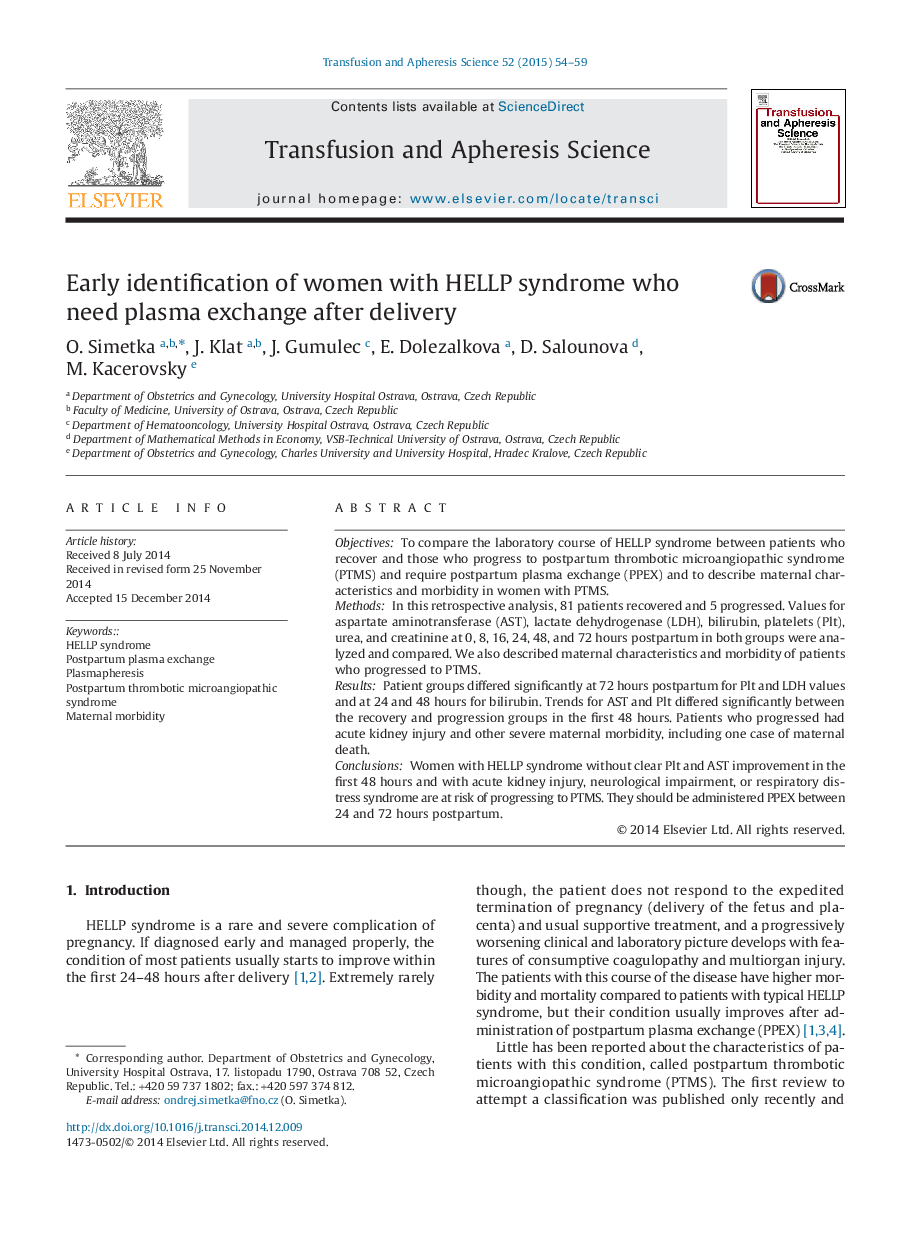| Article ID | Journal | Published Year | Pages | File Type |
|---|---|---|---|---|
| 3334917 | Transfusion and Apheresis Science | 2015 | 6 Pages |
ObjectivesTo compare the laboratory course of HELLP syndrome between patients who recover and those who progress to postpartum thrombotic microangiopathic syndrome (PTMS) and require postpartum plasma exchange (PPEX) and to describe maternal characteristics and morbidity in women with PTMS.MethodsIn this retrospective analysis, 81 patients recovered and 5 progressed. Values for aspartate aminotransferase (AST), lactate dehydrogenase (LDH), bilirubin, platelets (Plt), urea, and creatinine at 0, 8, 16, 24, 48, and 72 hours postpartum in both groups were analyzed and compared. We also described maternal characteristics and morbidity of patients who progressed to PTMS.ResultsPatient groups differed significantly at 72 hours postpartum for Plt and LDH values and at 24 and 48 hours for bilirubin. Trends for AST and Plt differed significantly between the recovery and progression groups in the first 48 hours. Patients who progressed had acute kidney injury and other severe maternal morbidity, including one case of maternal death.ConclusionsWomen with HELLP syndrome without clear Plt and AST improvement in the first 48 hours and with acute kidney injury, neurological impairment, or respiratory distress syndrome are at risk of progressing to PTMS. They should be administered PPEX between 24 and 72 hours postpartum.
